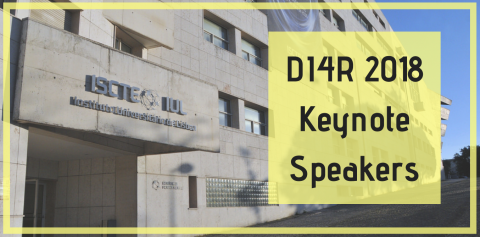Virtual research environments for the Open Science Cloud
Date:
Friday, September 30, 2016 - 11:30
This session, organised by the BlueBRIDGE project, will cover the ways in which innovative working environments can effectively support the daily work of researchers, industry (including SMEs) and international organisations, and how the Virtual Research Environments can play a role in the European Open Science Cloud landscape envisaged by the recent April 2016 Communication released by the European Commission. The outcomes of the session will be summarised in a post event report including a set of recommendations for the different communities and end users and useful to shape the future Open Science Cloud Initiative.
Session Agenda:
11:30 – 11:35 Welcome and objectives of the workshop, Sara Garavelli, Trust-IT Services
11:35 – 11:50 Virtual Research Environments for implementing long-tail Open Science, Pasquale Pagano, ISTI-CNR & BlueBRIDGE Technical Director
11:50 – 12:05 The BlueBRIDGE multidisciplinary & multi-sector approach: challenges and user benefits, Donatella Castelli, ISTI-CNR & BlueBRIDGE Coordinator
12:05 – 13:00 Interactive Panel
Session Overview:
Science is increasingly global, multipolar, and networked. Data continue to grow in volume and variety and research now crosses the boundaries of single institutions, disciplines, and countries. Innovative working environments are needed to give researchers, industry (including SMEs) and international organisations the facilities they need (data, services, computing resources) whilst allowing them to save time and money without compromising research quality. This is one of the main challenges addressed by the European Open Science Cloud initiative which aims to develop a trusted, open environment for the scientific community for storing, sharing and re-using scientific data and results. The development of the Open Science cloud, driven by the scientific community, will progressively over time open up to users from other sectors such as industry and the public sector from across Europe. It will also be open for educational and training purposes.
Can Virtual Research Environments (VREs) play a role? The iMarine project (www.i-marine.eu; 2011-2014) started experimenting with VREs in 2011. Thanks to D4Science (www.d4science.org), the iMarine underlying hybrid data infrastructure, the iMarine project was able to serve Data Analysts, Managers & Providers, Scientists, Researchers and SMEs working in the field of ecosystem approach to fisheries (EAF) and marine living resources with a set of tailor made VREs. iMarine proved that VREs can provide seamless access to the evolving wealth of resources (datasets, services, computing) - usually spread across many providers including e-Infrastructures - needed for a research activity. In terms of content, they can potentially support the entire research process covering open science practices such as sharing, publishing, and reproducing comprehensive research activities; giving access to research products while scientists are working with them; automatically generating provenance; capturing accounting; managing quota; supporting new forms of transparent peer-reviews and collaborations by social networking.
As the needs of the marine community continuously evolved over the years and the new sectors related to Blue Growth (such as aquaculture) were calling for efficient data and computing tools and resources, a new project started in September 2015 to address these new needs: BlueBRIDGE - Building research environments fostering Innovation, Decision making, Governance and Education for Blue Growth (www.bluebridge-vres.eu). BlueBRIDGE today delivers tailor made VREs (built on top of the D4Science hybrid-data infrastructure) to different communities (aquaculture, ecosystem approach to fisheries and the research sector) and stakeholders (international organisations, research centres, enterprises, etc.). Currently international organisations, such as the Food and Agriculture Organisation of United Nations (FAO), and private companies such as the Integrated Information System SA (I2S) from Greece are using BlueBRIDGE.
During the session, BlueBRIDGE will showcase through short presentations how its VREs are supporting different communities and sectors. The presentations will describe the challenges that these stakeholders are facing and how the solutions proposed by BlueBRIDGE can support them (highlighting the benefits for the end users). The talks will also demonstrate how the collaboration and sharing facilities made available by BlueBRIDGE can improve the way of working for the different stakeholders and how the VREs provided by BlueBRIDGE can easily interoperate or re-use existing e-infrastructures (e.g. the EGI Federated Cloud case).
The session will continue with an interactive panel involving representatives of the below VRE projects funded under the work programme 14-15 (indicatively five/six representatives for a one hour panel).
- MuG - Multi-scale complex Genomics - 3D/4D genomics represent one of the biggest challenges for biology and biomedicine in the next decade. MuG responds to the latest computational challenges of 3D/4D genomics by bringing this community closer to the HPC world and providing a suitable set of tools and infrastructure to integrate the navigation in genomics data from sequence to 3D/4D chromatin dynamics data.
- PhenoMeNal-Phenome and Metabolome aNalysis - A comprehensive and standardised e-infrastructure for analysing medical metabolic phenotype data. PhenoMeNal provides processing, analysis and information-mining of the massive amount of medical molecular phenotyping and genotyping data that will be generated by metabolomics applications now entering research and clinic.
- READ - Recognition and Enrichment of Archival Documents- implements a VRE where archivists, humanities scholars, computer scientists and volunteers are collaborating with the ultimate goal of boosting research, innovation, development and usage of cutting edge technology for the automated recognition, transcription, indexing and enrichment of handwritten archival documents
- West-Life - World-wide E-infrastructure for structural biology brings the world of complex data analysis in structural biology to a simple, web browser-based VRE. West-Life provides a framework for storing and processing data for any laboratory involved in the experimental structural characterization of biomolecules and their chemical make-up.
The panel will be the opportunity to investigate the following topics:
1. What are the existing approaches to deliver Virtual Research Environments and how VREs are supporting different stakeholders? (to get an understanding of what is the current VRE landscape)
2. How to ensure that data can be used as widely as possible, across scientific disciplines, between the public and the private sector? (as envisaged by the European Open Science Cloud)
3. How the current VREs are contributing to interconnect the new and existing data infrastructures across Europe?
The session will also present a great opportunity for the projects to identify collaboration opportunities, to understand if they can share resources to improve their services and to identify potential overlaps. The outcomes of the session will be summarised in a post event report including a set of recommendations for the different communities and end users and useful to shape the future Open Science Cloud Initiative.
Target Audience:
The session will provide valuable input for end-users (researchers, industry, international organisations), e-infrastructures and funding agencies and policy makers.
Benefits for Audience:
The audience will gain the opportunity to hear the opinions of some of the key players in the VRE sector with discussions based around:
• What are the existing approaches to deliver Virtual Research Environments and how VREs are supporting different stakeholders? (to get an understanding of what is the current VRE landscape)
• How to ensure that data can be used as widely as possible, across scientific disciplines, between the public and the private sector? (as envisaged by the European Open Science Cloud)
• How the current VREs are contributing to interconnect the new and existing data infrastructures across Europe?
The audience will have the opportunity to participate in the discussion asking questions and bringing different perspectives to the table. In addition, the discussions going on during the session will be posted via Twitter presenting the opportunity to the online community to participate and provide further feedback.
Topic 1: Challenges facing users and service providers
Download presentation:



